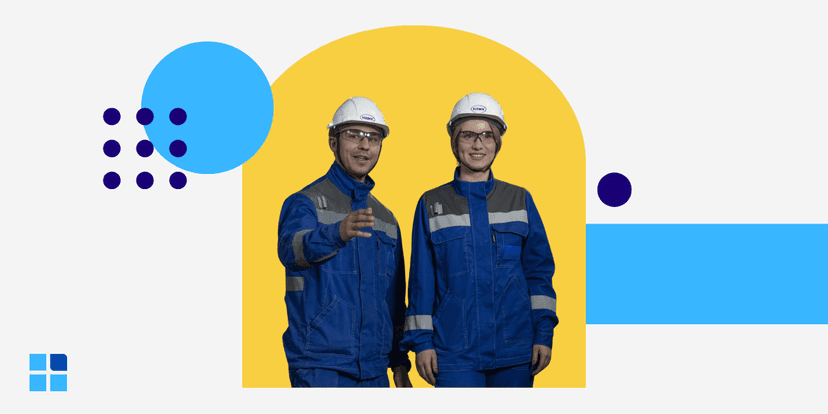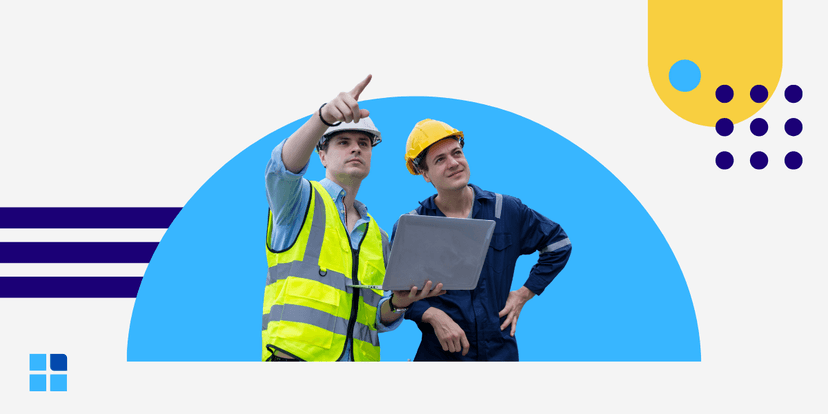Imagine a busy manufacturing line. Deep in the production process, a small defect occurs. In many factories, this flawed part continues down the assembly line, creating waste and costly rework. But in a lean facility, a powerful system known as Andon allows any operator to flag the issue immediately, preventing the problem from escalating.
This principle of immediate notification is the core power of Andon. In fact, it is a foundational concept of the Toyota Production System and a critical tool in lean manufacturing. It’s a powerful system designed to signal a problem the moment it happens. Thereby, empowering operators to take control of quality.
This guide will explore the origins of the Andon, how a modern Andon system works, and why this simple method is one of the most effective ways to improve your entire manufacturing process.
What is Andon?
The concept of Andon is elegantly simple, with roots that stretch back to a traditional Japanese object.
The Japanese term Andon (行灯) originally referred to a paper-enclosed lantern. Lean pioneers brilliantly adapted this visual cue (a light that signals a status) for the factory floor. In its manufacturing context, therefore, an Andon is a visual signalling system that alerts everyone on the line to a problem.
At its most basic, the system indicates the production status.

For instance, a green light means normal operation, while a yellow or amber light signals that a team leader's help is needed. A red light, on the other hand, means a quality or process issue has forced the operator to stop production.
Its purpose isn't to punish but rather to highlight where problems arise so the team can fix them on the spot. This proactive approach is fundamental to how the Toyota Production System builds quality into every step. A true Andon system, in short, is about transparency.
How a classic Andon cord system works
In its classic form, the system is a masterpiece of simplicity and effectiveness. The most famous component is undoubtedly the Andon cord. This is a physical rope or cable that runs the length of the production line.
Here’s the basic process:
- First, an operator encounters a problem. For example, a defective part, a tool malfunction, or a safety concern.
- Next, the operator pulls the Andon cord (or pushes an Andon button), an action which immediately changes the status light on a large, overhead board. This is the Andon alert.
- The system then instantly notifies the team leader, who heads to the operator's station to provide assistance.
- Finally, if the team can resolve the issue quickly, the line continues. If it's a more serious problem that requires a stop, the signal will reflect that, and the entire line will pause.
The beauty of this classic method is that it places control directly in the hands of the people doing the work. The decision to pull the cord is an act of ownership over quality. Consequently, this simple yet powerful system ensures no problem goes unnoticed.
Beyond the cord: Modern Andon systems
While the physical Andon cord is iconic, the principle has evolved significantly over time. Modern Andon systems, for example, have expanded on the original concept, leveraging digital technology to provide even more insight and control over the manufacturing process.
These advanced solutions go far beyond simple lights. Moreover, modern Andon systems often feature:
- Digital dashboards: Large screens display the real-time production status of the entire manufacturing line, showing exactly where an alert has been triggered.
- Automated alerts: In many cases, machinery can automatically activate an Andon. For instance, if a machine's torque sensor detects an error, it can trigger a signal without human intervention.
- Data integration: A modern system can log every stoppage, categorize the reasons, and track response times. This data is invaluable for identifying recurring issues and performing root cause analysis.
- Mobile notifications: Instead of just a light, the system can send Andon alerts directly to a team leader's tablet or smartphone, providing detailed information about the problem before they even arrive at the station.
These modern Andon systems maintain the core philosophy of immediate problem notification while adding layers of data analytics that help drive long-term improvements. The power of the Andon is certainly magnified with this technology.
A philosophy of empowering operators
Perhaps the most important aspect of the Andon system is not the technology, but the cultural shift it represents. Indeed, Andon is a tool that fundamentally trusts and empowers employees.
In many traditional manufacturing environments, companies expect an operator's job is to simply keep the line running at all costs. In these cultures, they often discourage reporting a problem, as it can be seen as causing a delay.
Andon, however, flips this dynamic entirely. Specifically, this system sends a clear message to every operator: "You are the expert on your process, and your voice matters."
The ability to stop production is an immense responsibility, and giving it to the people on the front lines demonstrates a deep level of respect for their skill and judgment. To empower operators in this way is to add the human touch back into an automated process. Andon, in essence, is a symbol of that trust.
Key factors for a successful Andon implementation
Simply installing a physical cord is not enough; a successful Andon system requires a deep commitment to the principles behind it. If you're considering implementing this method, you should focus on these critical success factors:

- Leadership commitment: First and foremost, management must champion the underlying philosophy. If an operator pulls the cord and is later questioned or blamed for stopping production, the entire system will fail. Leaders must view every Andon alert as a valuable learning opportunity, not a disruption.
- Standardized response procedures: Additionally, everyone needs to know exactly what to do when an alert is triggered. Create a clear, documented process for response times, escalation protocols, and how to conduct on-the-spot problem-solving.
- Comprehensive training: It's also vital to train your team not just on how to use the Andon button, but why it’s so important. Connect the tool directly to your company's quality goals and show how it helps in the long term.
- A no-blame culture: Finally, this is essential. The purpose of an Andon is to find and fix process failures, not to find someone to blame. Foster an environment where operators feel safe to highlight problems the moment they arise.
The tangible ROI of this system
For business leaders, the decision to implement any new system often comes down to return on investment.
The good news is that a well-executed Andon system delivers returns in both financial and cultural terms.
Financially, the benefits are clear. For example, this method drastically reduces the cost of poor quality because it catches defects immediately. Thereby, minimizing scrap and expensive rework.
Culturally, the returns are just as powerful. When you empower operators with the cord, you create a more engaged and proactive workforce. This, in turn, builds a culture of ownership and continuous improvement, where every team member is actively involved in making the manufacturing process better. It is an investment in your people and your processes.
Andon and problem-solving
Triggering an Andon is only the first step.
The ultimate goal of an Andon system is not just to fix the immediate issue, but to ensure it never happens again. This is where Andon connects directly with the problem-solving process.
When an operator pulls the Andon cord, it serves as a call to action for the entire team.
Consequently, the stoppage creates a critical window of opportunity to perform root cause analysis. The team leader and operator then work together to investigate why the problem occurred in the first place.
This relentless focus on the root cause is what separates organizations that follow the lean methodology from others. They don't just patch the problem to get the line moving again; instead, they dig deeper.
The signal provides the real-time, on-the-spot trigger to begin that investigation. By using the Andon to drive deep problem-solving, organizations can make meaningful, long-term improvements to their production process. This alert is a critical input to this analysis. In the end, every Andon event is a chance to learn.







